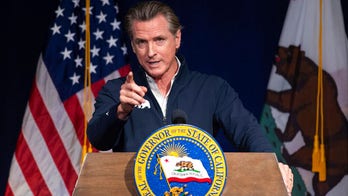MILWAUKEE -- Wisconsin's Supreme Court race could come down to one factor: whether voters in Republican parts of the state can match the passion of voters in the Democratic strongholds of Dane and Milwaukee counties.
City clerks in Madison and Milwaukee say voting interest has been remarkably high in a race Democrats have tried to turn into a referendum on a polarizing union-rights law pushed by Republican Gov. Scott Walker. Madison's city clerk predicted voter turnout of 60 percent, an unheard-of level for an April ballot.
Such trends would seem to favor the challenger, Assistant Attorney General JoAnne Kloppenburg, who has presented herself as a left-leaning alternative to incumbent Justice David Prosser. For the conservative Prosser to win a second, full 10-year term, he'll likely need strong turnouts in traditionally Republican counties.
Incumbent justices typically have a large advantage over their generally lesser-known opponents. However, Democrats have tried to tap into the anger and discontent that flooded Madison in February and March as Walker pushed his plan to strip most public workers of nearly all their collective bargaining rights.
Tens of thousands of protesters swarmed the Capitol for weeks, only to see the law pass anyway last month. The law is on hold as legal challenges make their way through the courts -- and many expect the state Supreme Court could eventually decide the issue.
Although Prosser has told The Associated Press he doesn't necessarily agree with the law, bitter Democrats began portraying him as a Walker clone and Kloppenburg as a liberal alternative.
The strategy appears to have worked -- at least in some pockets of the state.
For example, Madison city clerk Maribeth Witzel-Behl said 7,190 absentee ballots had already been submitted by Monday, outpacing the absentee count from the presidential primary of February 2008. While the ballots haven't been counted, high turnout in the liberal city is likely to Kloppenburg's benefit.
Witzel-Behl predicted a 60 percent turnout, which would be a record high for an April election since Madison started keeping records in 1984. Madison also has hotly contested mayoral and county executive races, but political observers suspect the statewide race is driving many voters' passions.
The race is also on track to be the most expensive high court race in Wisconsin history. Groups backing both candidates have been spending $300,000 to $400,000 per day on TV ads, and that continued Monday, according to a group that studies judicial spending.
While neither candidate's campaign would discuss internal polling numbers, one political expert said the frenzied pace of last-minute spending suggested a tight race. Mordecai Lee, a professor at the University of Wisconsin-Milwaukee, said groups usually cut their losses and save their money if polls show their candidate significantly behind.
"Clearly that's not happening here," Lee said.
Regardless of the outcome, Walker has said he won't interpret Tuesday's results as an endorsement or indictment of his policies.
Governors don't often weigh in on state Supreme Court races, but this one has been unusual. Outside groups have poured at least $3.1 million into a race that wasn't initially expected to be competitive. Prosser won a nonpartisan February primary with 55 percent of the vote, while Kloppenburg finished second out of four candidates with just 28 percent.
Kloppenburg's campaign surged, however, during weeks of protests that drew up to 85,000 people to the state Capitol in opposition to Walker's plan.
The seven-member court is officially nonpartisan, but Prosser is seen as part of a conservative four-justice majority. A win by Kloppenburg would tilt the court's ideological balance to the left.
Statewide, voter turnout was expected to be about 20 percent, in line with elections that have featured a contested state Supreme Court races in the past decade, according to the Wisconsin Government Accountability Board.
Wisconsin has a recent history of costly Supreme Court races. Outside groups spent a record $3.4 million here in 2008, according to the Brennan Center for Justice, a New York University program that tracks spending on judicial races. After a quiet 2009 race and no race in 2010, spending this year reached $3.1 million through Sunday, and a burst of last-minute ads was expected to bring the total to $3.7 million.




